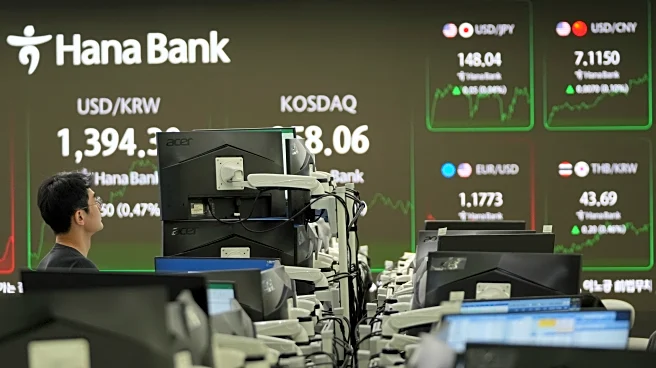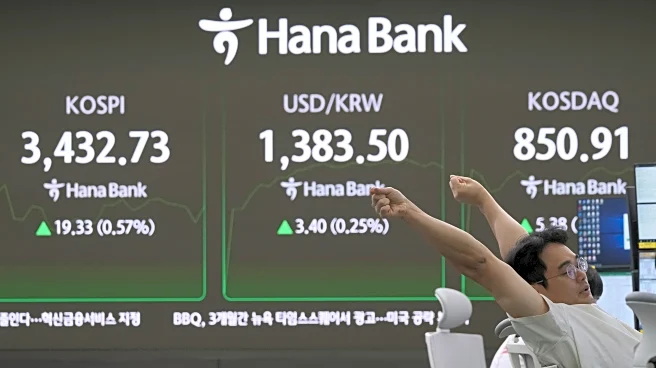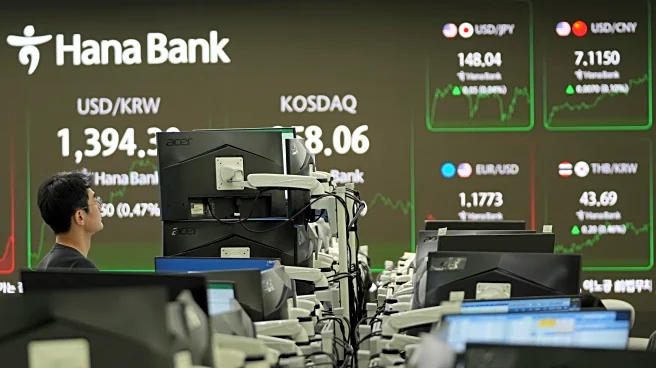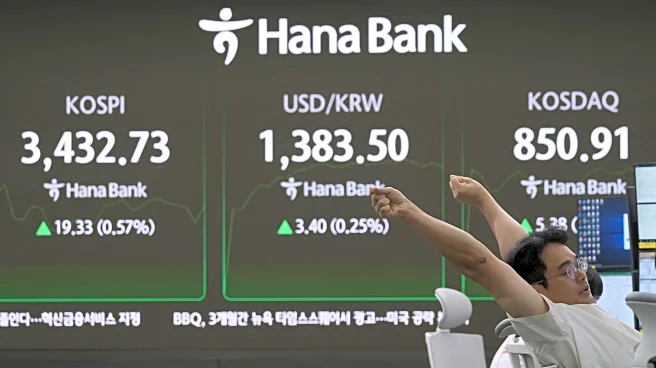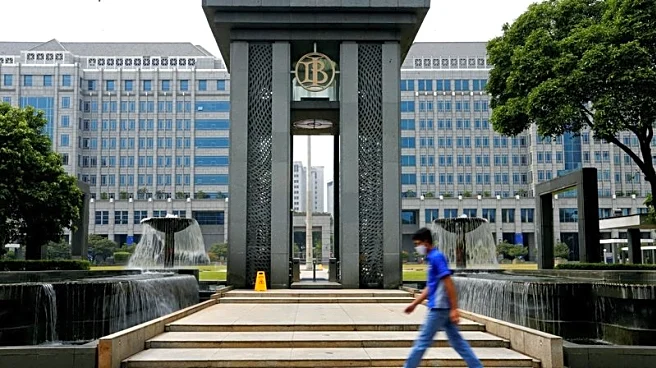What's Happening?
The Federal Reserve has reduced its benchmark overnight lending rate by a quarter percentage point, bringing it to a range of 4%-4.25%. This decision, described by Fed Chair Jerome Powell as a 'risk management cut,' is intended to address economic uncertainties rather than directly support a weak economy. The Fed has also indicated the possibility of two more rate cuts within the year. This move has implications for Asian economies, as it narrows the gap between U.S. and Asian bond yields, potentially easing currency concerns. As a result, several Asian central banks, including those in South Korea and India, may find more room to lower their rates in response to domestic economic challenges and the impact of U.S. tariffs.
Why It's Important?
The Federal Reserve's decision to cut interest rates is significant as it influences global economic policies, particularly in Asia. By narrowing the bond yield gap, the Fed's action provides Asian economies with the opportunity to adopt more accommodative monetary policies. This is crucial for countries facing domestic economic headwinds and trade tensions, as it allows them to stimulate growth without exacerbating currency depreciation concerns. The move also highlights the interconnectedness of global economies, where U.S. monetary policy can have ripple effects across regions, impacting trade balances, inflation rates, and economic growth trajectories.
What's Next?
Asian central banks are likely to continue adjusting their monetary policies in response to the Fed's actions. Economists predict further rate cuts in the fourth quarter for countries like South Korea and India, as they seek to mitigate growth concerns and manage inflation. The ongoing trade tensions and tariffs imposed by the Trump administration will also play a role in shaping these decisions. As the U.S. dollar remains weak, Asian economies may experience a prolonged period of rate cuts, which could support domestic growth and counteract external economic pressures.
Beyond the Headlines
The Fed's rate cut underscores the delicate balance central banks must maintain between fostering economic growth and controlling inflation. In Asia, the decision could lead to a longer cycle of rate reductions, given the region's resilient growth figures and low inflation. This situation presents both opportunities and challenges, as countries must navigate the complexities of global trade dynamics and domestic economic priorities. The broader implications of these monetary policy shifts could influence long-term economic strategies and regional cooperation in addressing shared economic challenges.


